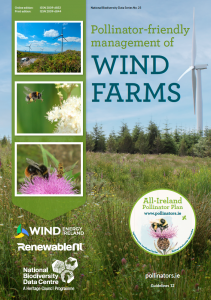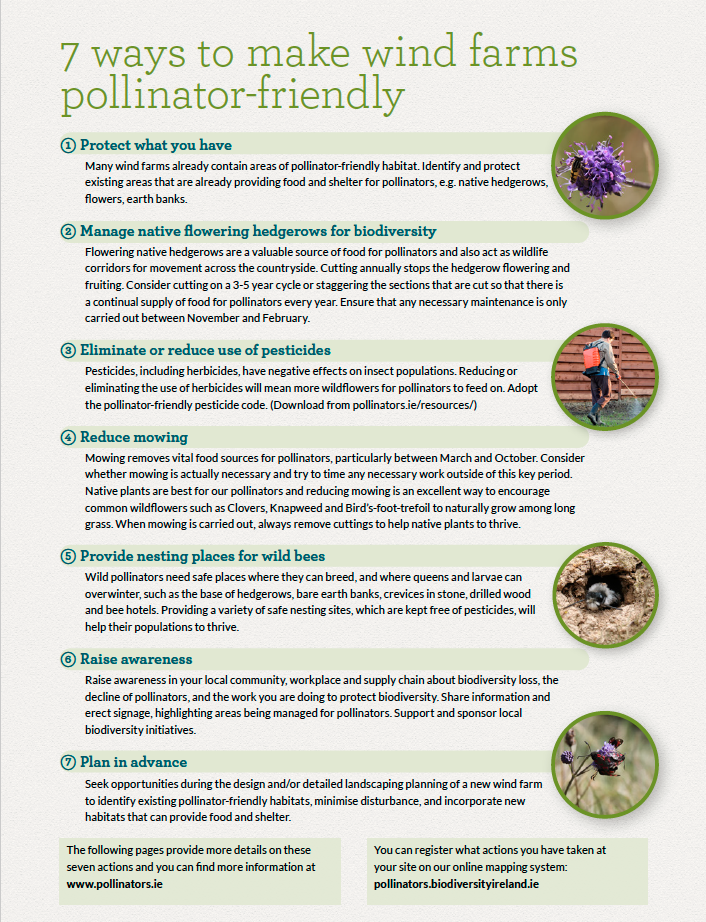Wind Farms
Download Pollinator-friendly management of Wind Farms
Wind energy is Ireland’s largest source of renewable energy and is playing a key role in the decarbonisation of Ireland’s economy. With around 400 wind farms across the island —a number which is expected to grow rapidly over the coming years — the wind industry can play a vital role in conserving our biodiversity and natural habitats if sites are managed in a pollinator-friendly way.
Wind farms in Ireland are found in many different types of habitat, such as farmland, blanket bog, lowland raised bog, moors and afforested sites, away from urban areas. Introducing pollinator-friendly management across wind farms would create a network of safe places for bees and other insects across the landscape, intersecting many different habitat types and ecosystems.
These actions could have a considerable positive impact, not only on wild plants and pollinators, but also on the species that depend on them e.g. birds, mammals and the species that prey on those, resulting in potential positive impacts right up along the food chain.
This guide is aimed at those who have responsibility for managing wind farms and their surroundings. It identifies seven ways a wind farm operator can help pollinators. All these actions are evidence-based, i.e. scientific studies show that they have a positive impact on pollinators.
Pollinators need food, shelter, and safety; fortunately many of the actions we can take to help provide this are simple. They often involve ‘doing less’, with minor changes to existing management strategies, and with nature itself doing most of the hard work.
“Wind Energy Ireland is delighted to support the All-Ireland Pollinator Plan and to encourage our members to do what they can to manage their sites in a biodiversity-friendly way.”


